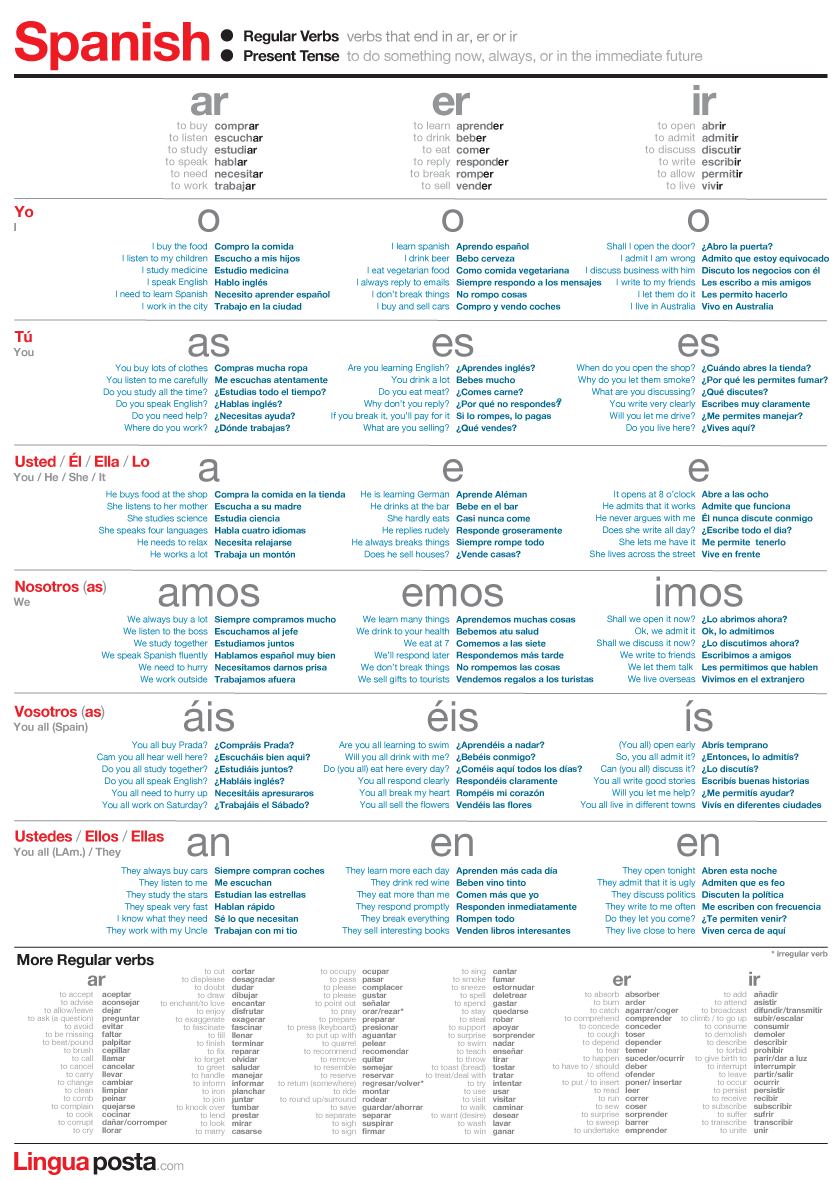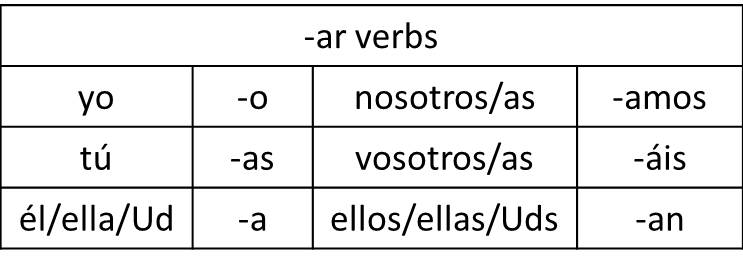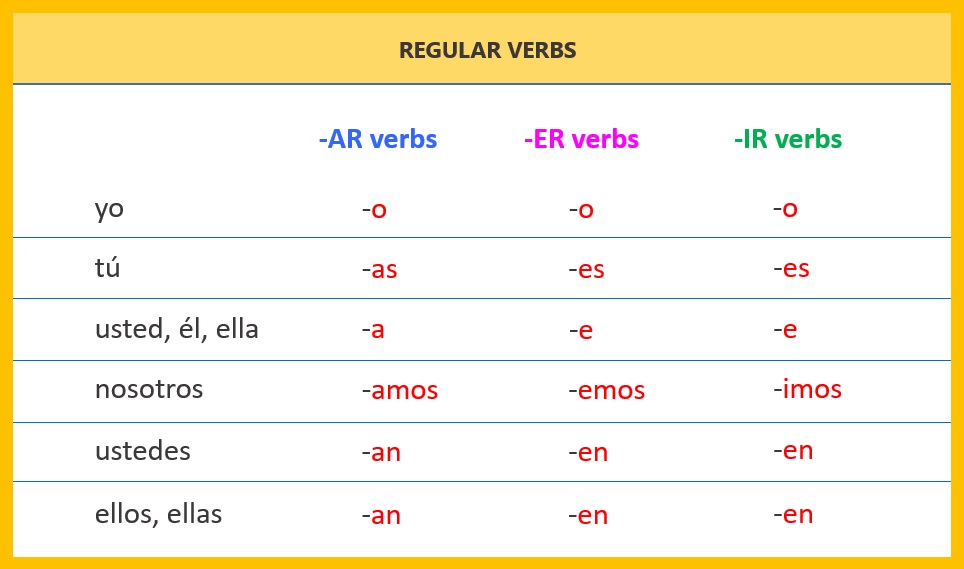

If you are interested in learning Spanish online, check out LingoPie.

Hablar is a great first verb to learn on your Spanish journey. And, conjugating it will help you to learn Spanish tenses more easily. Summing Up: Hablar Spanish Verb ConjugationĪs you can see, conjugating the verb hablar in Spanish is fairly straightforward. The verb we conjugate here is not hablar, but ‘haber, an auxiliary verb ‘to have.’īelow, you will see each verb conjugation for the present perfect form of hablar. We also use it to talk about things that have happened in the recent past.Īn example of this may be “I have spoken” – he hablado. We use the Spanish Present Perfect to talk about things that started in the past but continue or repeat in the present. Look at the table below to see how this works. When you are telling somebody not to do something, the conjugation of the verb changes. The negative imperative form of the verb hablar is straightforward. I don’t understand you” translates to Habla más despacio, por favor. The imperative form is used to give commands or orders.

However, its conjugation depends on who you are speaking to (and whether this is formal or informal). The imperative, or imperativo in Spanish, is one of the easiest forms of hablar to remember. The Affirmative Imperative Form of Hablar For example, “Did you want me to speak with him tomorrow morning?” which translates to, ¿Querías que yo hablara con él mañana por la mañana? Subject You also use que with the pronoun and verb. In Spanish, the imperfect subjunctive, or imperfecto del subjuntivo, is used to describe something in the past and is used in situations of doubt, desire or emotion.

This does not mean you can use it based on how you feel! We use the subjunctive in Spanish in situations of doubt, desire, or emotion.įor example, “I want you to speak with me in Spanish every day,” would be said, Yo quiero que hables conmigo en español todos los días.īelow, you will see each verb conjugation for the present subjunctive form of hablar. However, the use of the subjunctive depends on the mood. The present subjunctive, or el presente subjuntivo, functions much like the present indicative tense in terms of time. The key here is to look at the Spanish subjunctive as any other tense. We now come on to one of the greatest causes of migraine amongst Spanish learners – our beloved subjunctive. This makes the translation easier to remember.īelow, you will see each verb conjugation for the conditional tense. In English, this translates as would, could, must have or probably.įor example, “Would you speak Spanish every day if you could?” translates to ¿Hablarías español todos los días si pudieras?Īs a side note, “would you speak?” and “you would speak” is the same in Spanish. We use it to express probability, possibility, wonder or conjecture. The conditional tense in Spanish, or el tiempo condicional, is another frequently used form of future tense. For example, Hablaré con mis amigos mañana por la mañana, means “I will speak with my friends tomorrow morning.” Subject In the conjugated form of the verb, the future indicative means “will” do something e.g. The important word here is will, as this is how we translate the future indicative tense into English. The future indicative form, or futuro del indicativo in Spanish, is used to tell what will happen. We now leave our group of past tenses in Spanish and move on to our first future tense. For irregular preterite endings, see our Guide to Irregular Preterite Endings.īelow, you will see each verb conjugation for the preterite tense in Spanish. The preterite tense is often difficult for students learning Spanish due to the relative complexity of the endings, even for a regular ar verb. The preterite indicative form of hablar in English is “spoke.” In Spanish, we call this el pretérito.įor example, “Julia spoke with Martin yesterday,” is translated to Julia habló con Martin ayer. The Spanish preterite indicative form, referred to more commonly as the preterite tense, is used for past events that have already taken place at a fixed time. Let’s look at the conjugation of the verb hablar in the present tense below. An example is, “Do you speak English?” – Hablas inglés ? or hablais inglés in the plural form. In Spanish, this tense is known as the presente del indicativo. Indicative means the verb is a statement of fact, as opposed to the subjunctive (which we come on to later). The present tense form of the hablar Spanish verb means that the verb is expressing an action that is happening in the present moment.
#SPANISH VERB ENDINGS FOR MI AMIGOS HOW TO#
LEARN SPANISH VERBS BY WATCHING TV How to Conjugate Hablar in the Present Indicative Tense


 0 kommentar(er)
0 kommentar(er)
